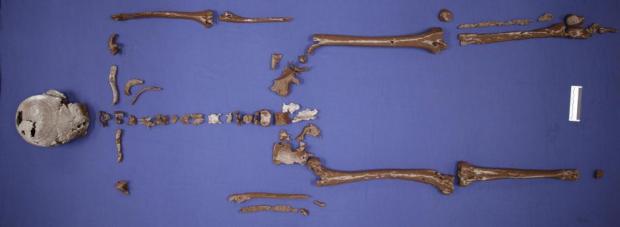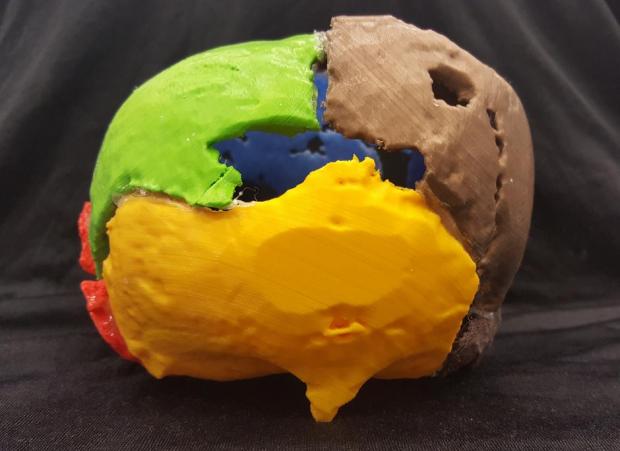Scientists in Denmark recently exhumed the body of King Gorm to learn about him via 3D scanning and printing technologies.
‘Gorm the Old,’ the first man to call himself King of Denmark, died in 958 CE. Oddly enough, since then, he’s been taken out of his grave three times.
However, his most recent removal was by scientists who intend to study him for 3D scanning and printing purposes.
Back in 1978, the King’s bones were discovered in Denmark’s Jelling Church, marking his first removal from the grave.
Then, again in 2000, archaeologists from the National Museum of Denmark removed him again for a CT-scan of his bones and then reburied him.
Unfortunately, those scans were poor quality and so Gorm was exhumed once again for what is now his third exit from the tomb. This time, however, the famous King who named the country was 3D scanned and printed in a range of colors.
As you might expect after such a long time, many of his bones have been damaged. Nonetheless, this hasn’t ruined the experience for Adam Bak, curator at Kongernes Jelling, National Museum of Denmark.
Bak facilitated the reconstruction and explains how it felt to hold the remnants of Denmark’s greatest king.
“It’s a great feeling to stand with them in your hand, turning them over, and looking at them. From a pure science communication perspective, it’s so much better to have a ‘real’ bone in your hand than to read a dry text about a historical person. I can’t deny that I’ve also played Hamlet with his skull,” says Bak.

3D Printing Reveals New Information About Old King Gorm
To create the 3D prints, the scientists first used a CT-scan of Gorm’s bones. Then, they reburied him under Jelling church in Denmark. Hopefully, for the last time.
With 3D scanning technology, the scientists are able to factor in pressure damage and readjust his bones. After re-analysis, they were able to find signs of disease – when they discovered a lump on King Gorm’s head.
“He had a very pronounced growth on his neck just where it meets the back of the head. It looks like a bird’s beak and it’s really pronounced. It’s not totally unheard of, but we don’t see it very often,” says Marie Louise Jørkov, a postdoc in the Section of Forensic Pathology at the University of Copenhagen, Denmark.
Apparently, a lump like this occurs when the bones attached to the neck muscles grows too much. However, the scientists believe the growth had no effect on Gorm’s brain function, but may have caused him to sleep on his side.
Although the scientists are still not conclusively able to prove whether the bones were actually King Gorm’s, Bak explains that at least he won’t be leaving the grave again anytime soon.
“He’s been in the grave for 800 years, which for much of that time was under water, and his bones are very damaged. I doubt that it’s possible to extract DNA or strontium [a trace element that can say something about where a person was born and lived]. Moreover, he’s been disinterred three times now, so it’s also a question of allowing him to rest in peace.”
One has to wonder, however, that if Gorm the Old really hoped to rest in peace, perhaps he should have considered cremation?
Source: Science Nordic

License: The text of "3D Scanning & Printing Denmark’s First Viking King, Gorm the Old" by All3DP is licensed under a Creative Commons Attribution 4.0 International License.